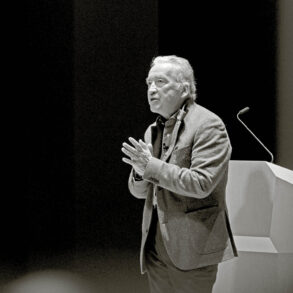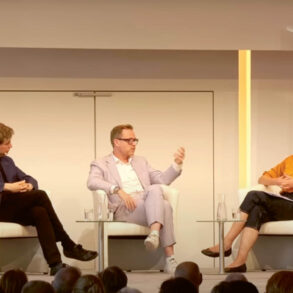Dramatic Development in the World of Birds.
This year, birdsong sounds sparse—not just “sparser”, as it’s been unmistakably getting more and more from year to year. Anyone who listened to the concert of birds at dawn twenty years ago could still experience the abundance of bird voices building up a full chorus that ultimately extended above and around them like a dome. What had been a few minutes earlier, in the silence of the night, the sparkling of stars in the heavenly dome became a grandiose echo of the twinkling stars at dawn in the concert of bird song. And now, in 2023? It sounds as if the curtains have already been autumnally lowered. The singing ebbs away, thinned out, without any prospect of ever being able to build up a dome of sound again.
Intensive Agriculture and Building Development
A number of scientific publications in recent years demonstrate that this should not be dismissed as the subjective experience of one sentimental and overly dramatic bird lover.1
Our birdlife is doing poorly. In a study recently published in the American journal Proceedings of the National Academy of Sciences2, nearly 50 authors investigated the causes of the striking decline in 170 European bird species based on data from more than 20,000 sites in 28 European countries over a period of 37 years. Conclusion: the main causes of the decline are, firstly, the intensification of industrial agriculture through the use of pesticides and artificial fertilizers and, secondly, unchecked building development due to the continent-wide advance of urbanization. It is not only the bird communities of the field and arable landscape that suffer from intensive agriculture. Intensive agriculture is also the main cause of the decline in all other landscapes. Why? Because the use of artificial pesticides in particular has led to a drastic decline in the insect world. In Germany alone, the insect biomass is said to have dropped by more than 75 percent in the last 30 years.3 Imagine that! What, then, are our birds supposed to feed their young with?
Thousands—Millions—Billions
And that’s not all. Consider the following figures. Since 1970, about 3.2 billion birds, almost 30 per cent of the total breeding population of North America, have disappeared.4 Since the 1980s, the European bird population has declined by at least 600 million individual birds, which is about one sixth of the total European bird population.5 Every year between 11 and 36 million songbirds end up on restaurant menus along the coasts of Mediterranean countries due to illegal bird trapping, according to conservative estimates. And in New York alone, around 90,000 birds die from collisions with windows every year, not only due to reflection but because during migration periods, and especially at night, birds are drawn away from their migratory route by the lights of cities and skyscrapers.6
This spring, horror stories about a wildlife pandemic (panzootic) made the rounds in the press—a “malignant” variant of avian influenza, the source of which is assumed to be the mass poultry farms of East Asia that lack any standards. The world of sea and water birds is particularly affected by the epidemic. Thousands of dead carcasses have reportedly already been found along their migratory routes.7
Disinvited
At the beginning of the twentieth century, we humans succeeded in irretrievably disinviting the North American passenger pigeon from our planet. What could be instructive about this is that, seen purely mathematically, from a population biology point of view, we awoke sufficiently early to have still been able to save this bird species. Nevertheless, it took its leave for good. The last specimen of the passenger pigeon, christened “Martha”, died in a Cincinnati zoo. In view of the still shocking reports on the outright massacre of a once immeasurably large population of passenger pigeons for the purpose of meat consumption and economic profit, the retreat of such a bird species cannot come as a surprise.8
Whom have we humans actually disinvited? Or rather: whom are we potentially disinviting today, now, in view of the figures mentioned above? In various places in his lectures, Rudolf Steiner points out that in our birds we are dealing with a metamorphosis, contracted into earthly miniature form, of gigantic hierarchical figures from before birth.9 Their presence, the beating of the wings of the angelic world, is what we disinvite from our earthly environment through our ignorance of earthly creatures that have an almost childlike, even paradisiacal innocence—for how else can we describe our feathered friends, the songbirds, whose song gives us a fresh zest for life every spring?
Silent Spring
In 1962, just over 60 years ago, Rachel Carson’s Silent Spring went around the world—a classic of the environmental movement, written with the encouragement and support of two eurythmists and biodynamic gardeners, Marjorie Spock and Mary Richards.10
It is to be hoped that humanity will wake up in time to prevent their scenario of a “silent spring” from suddenly becoming a bitter reality after all.
Translation Christian von Arnim
Photo Peter Ertl
Footnotes
- See e.g.: Simon Butler et al., Bird population declines and species turnover are changing the acoustic properties of spring soundscapes. In Nature Communications, Nov. 2021.
- Volume 120, Issue 21, May 2023.
- CA Hallmann, M Sorg, E Jongejans, H Siepel, N Hofland, H Schwan, et al. (2017), More than 75 percent decline over 27 years in total flying insect biomass in protected areas. PLoS ONE 12(10): e0185809.
- Scott Weidensaul, Auf Schwingen um die Welt. Munich 2022.
- Alexander C Lees et al., State of the World’s Birds. Annual Review of Environment and Resources. No. 47/2022: 6.1–6.30.
- Weidensaul, op. cit.
- See e.g.: Thomas Krumenacker, Pandemie am Himmel. Der Spiegel No. 19/2023.
- See e.g. the report by Anita Albus in her book: Von seltenen Vögeln. Frankfurt 2006. p. 11–20.
- Rudolf Steiner, Harmony of the Creative Word. CW 230, lecture of 28 October 1923.
- Dieter Steiner, Rachel Carson – Pionierin der Ökologiebewegung. Munich 2014.









